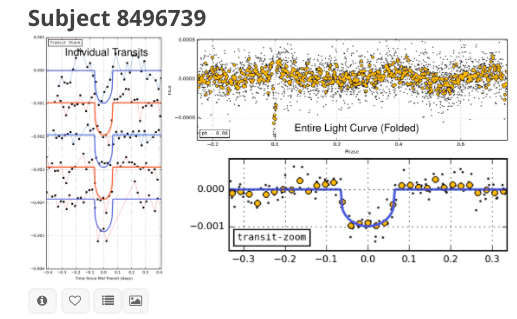Breaking news… Zooniverse volunteers on Exoplanet Explorers have discovered a new 4-planet system!
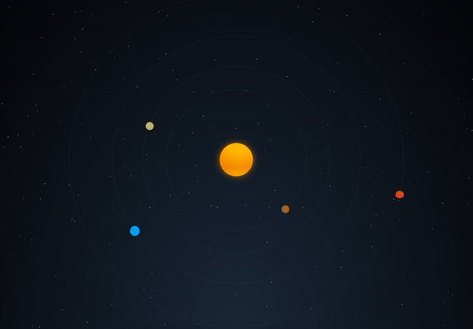
Congratulations to all* who directly classified the light curves for this system, bringing it to the attention of the research team. And an enormous *thank you* to the 14,000+ volunteers who provided over 2 million classifications in just three days to make this discovery possible. This is equivalent to 3.4 years of full time effort. I *heart* people-powered research! It’s also amazing how quickly we were able to get these data to the eyes of the public — the Kepler Space Satellite observed this star between December 15 and March 4, 2017. Data arrived on Earth on March 7th and Zooniverse volunteers classified it April 3-5, 2017. I *heart* Zooniverse.
ExoplanetExplorers.org was the featured project for our inaugural ABC Australia Stargazing Live 3-day, prime-time TV event, which just ended yesterday and through which this discovery was made. Over the years, we’ve partnered with the BBC as part of their Stargazing Live event in the UK. On night 1, Chris Lintott, our intrepid leader, invites the million+ viewers to participate in that year’s featured Zooniverse project, on night 2 he highlights interesting potential results coming through the pipeline, and on night 3, if science nods in our favor, he has the pleasure of announcing exciting discoveries you all, our volunteers, have made (for example, last year’s pulsar discovery and the supernova discovery from a couple years back).
This year we partnered with both the UK’s BBC and Australia’s ABC TV networks to run two Stargazing Live series in two weeks. We’re exhausted and exhilarated from the experience! We can imagine you all are as well (hats off to one of our volunteers who provided over 15,000 classifications in the first two days)!
Stargazing Live epitomizes many of our favorite aspects of being a member of the Zooniverse team – it’s a huge rush, filled with the highs and lows of keeping a site up when thousands of people are suddenly providing ~7000 classifications a minute at peak. We’re so proud of our web development team and their amazing effort; their smart solutions, quick thinking, and teamwork. The best part is that we collectively get to experience the joy, wonder, and discovery of the process of science right alongside the researchers. Each year the research teams leading each project have what is likely among the most inspiring (and intense) 3-days of their careers, carrying out the detective work of following up each potential discovery at breakneck speed.
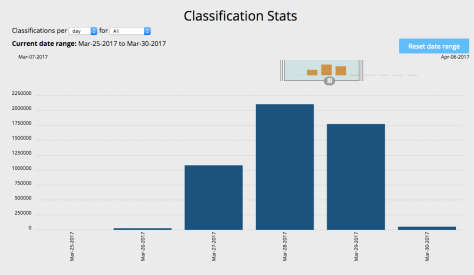
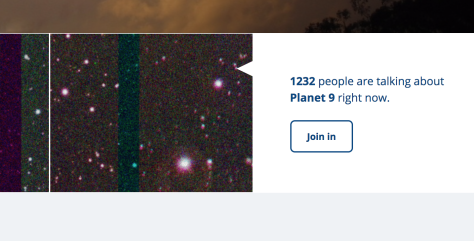
Brad Tucker and his team leading PlanetNineSearch.org featured in the BBC Stargazing Live event this year checked and rechecked dozens of Planet 9 candidates orbital parameters and against known object catalogs, making sure no stone was left unturned. We were bolstered throughout with re-discoveries of known objects, including many known asteroids and Chiron, a minor planet in the outer Solar System, orbiting the Sun between Saturn and Uranus.
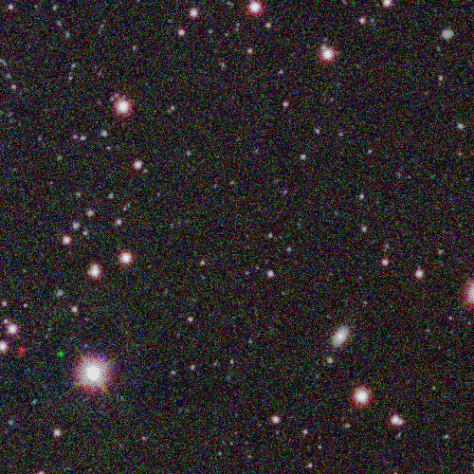
Even though Planet 9 hasn’t been discovered yet, it’s huge progress for that field of research to have completed a thorough search through this Skymapper dataset, which allows us to probe out to certain distances and sizes of objects across a huge swath of the sky. Stay tuned for progress at planetninesearch.org and through the related BackyardWorlds.org project, searching a different parameter space for Planet 9 in WISE data.
Also, and very importantly, the BBC Stargazing Live shows gave the world an essential new member of the Twitterverse:

The Exoplanet Explorers team, led by Ian Crossfield, Jessie Christiansen, Geert Barentsen, Tom Barclay, and more were also up through much of each night of the event this week, churning through the results. Because the Kepler Space Telescope K2 dataset is so rich, there were dozens of potential candidates to triple check in just 3 days. Not only did our volunteers discover the 4-planet system shown above, but 90 new and true candidate exoplanets! That’s truly an amazing start to a project.
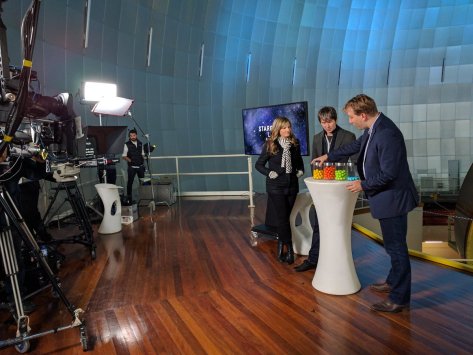
Once you all, our amazing community, have classified all the images in this project and the related PlanetHunters.org, the researchers will be able to measure the occurrence rates of different types of planets orbiting different types of stars. They’ll use this information to answer questions like — Are small planets (like Venus) more common than big ones (like Saturn)? Are short-period planets (like Mercury) more common than those on long orbits (like Mars)? Do planets more commonly occur around stars like the Sun, or around the more numerous, cooler, smaller “red dwarfs”?
There’s also so much to learn about the 4-planet system itself. It’s particularly interesting because it’s such a compact system (all orbits are well within Mercury’s distance to our Sun) of potentially rocky planets. If these characteristics hold true, we expect they will put planet formation theories to the test.
A fun part of our effort for the show was to create visualizations for this newly discovered system. Simone, one of our developers, used http://codepen.io/anon/pen/RpOYRw to create the simulation shown above. We welcome all to try their hand using this tool or others to create their favorite visualization of the system. Do post your effort in the comments below. To set you on the right path, here are our best estimates for the system so far:
- The star is in the constellation of Aquarius (see if can get the WWT), with ra, dec = 23:15:47.77, -10:50:58.91.
- Host star (V=12): 0.8 Rsol, 0.9 Msol. Late G or early K.
- Rotates once every 12 days or so.
- Distance: 183pc = 597ly.
- Sizes: 1.98 Re, 2.03 Re, 2.74 Re, 2.22 Re.
- Periods: 3.6d, 5.4d, 8.3d, 12.8d.
- Semi-major axii: 0.04 AU, 0.06 AU, 0.08 AU, 0.10 AU.
- We predict there may be more planets further out, with similar resonances as the inner planets. The predictions for outer planets are 20d, 30.7d, 47d, etc. (assuming Per_x = 3.56 * 1.538^x.). Planet number 11 would be ~264d, planet 12 ~405d.
- There are 73 other previously discovered exoplanet systems with 4 or more planets known.
- Relevant papers: Hot super-Earths stripped by their host stars (https://arxiv.org/abs/1604.05220)
- Zooniverse subject IDs = 8496739, 8496741, 8496743, 8496745, URLs:
- https://www.zooniverse.org/projects/ianc2/exoplanet-explorers/talk/subjects/8496739
- https://www.zooniverse.org/projects/ianc2/exoplanet-explorers/talk/subjects/8496741
- https://www.zooniverse.org/projects/ianc2/exoplanet-explorers/talk/subjects/8496743
- https://www.zooniverse.org/projects/ianc2/exoplanet-explorers/talk/subjects/8496745
Fun facts:
- In 2372 years, on July 9, 4388AD, all four planets will transit at the same time.
- If you’re standing on planet e, the nearest planet would appear bigger than the full moon on the sky. Apparent size of other planets while standing on e = 10 arcmin, 16 arcmin, 32 arcmin.
- If you’re on planet e, the star barely appears to rotate: you see the same side of it for many “years,” because the star rotates just as quickly as planet “e” goes around it.
This post wouldn’t be complete without a thank you to Edward Gomez for following up candidates with the Los Cumbres Observatory Robotic Telescope Network. Not only is LCO a great research tool, but it provides amazing access to telescopes and quality curricular materials for students around the world.
*And a special thanks to the following volunteers who correctly identified at least one the planets in the newly discovered 4-planet system:
Joshua Kusch
Edward Heaps
Ivan Terentev
TimothyCatron
James Richmond
Alan Patricio Zetina Floresmarhx
sankalp mohan
seamonkeyluv
traumeule
B Butler
Nicholas Sloan
Kerrie Ryan
Huskynator
Lee Mason
Trudy Frankensteiner
Alan Goldsmith
Gavin Condon
Simon Wilde
Sharon McGuire
helenatgzoo
Melina Thévenot
Niamh Claydon-Mullins
ellieoban
Anastasios D. Papanastasiou
AndyGrey
Angela Crow
Dave Williams
Throbulator
Tim Smith
Erin Thomas
Valentina Saavedra
Carole Riley
sidy2001
bn3
ilgiz
Antonio Pasqua
Peter Bergvall
Stephen Hippisley
sidy2001
bn3
Michael Sarich

